NOTE 10/28/2019: See updated information regarding Diran extruder heads, below.
Does the idea of 3D printing parts in semi-aromatic polyamides (PA) sound intriguing? Too bad it has nothing to do with making nicely scented models – but it has everything to do with reaping the benefits of the Nylon family’s molecular ring structure. Nylon 6, Nylon 12, carbon-filled Nylon 12 and now a new, smoother Nylon material called Diran each offer material properties well-suited for additive manufacturing on industrial 3D printers.
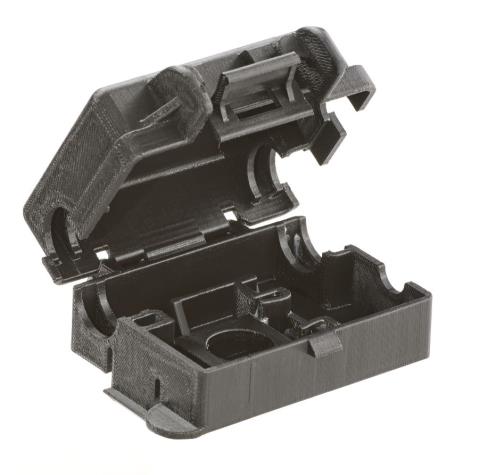
Quick chemistry lesson: in polyamides, amine sub-groups containing nitrogen link up with carbon, oxygen and hydrogen in a ring structure; most end up with a strongly connected, semi-crystalline layout that is key to their desirable behaviors. The number of carbon atoms per molecule is one way in which various Nylons (poly-amines) differentiate themselves, and gives rise to the naming process.
Now on to the good stuff. PA thermoplastics are known for strength, abrasion-resistance and chemical stability – useful material properties that have been exploited since Nylon’s discovery at Du Pont in 1935. The first commercial Nylon application came in 1938, when Dr. West’s Miracle Tuft Toothbrush closed the book on boar’s-hair bristle use and let humans gently brush their teeth with Nylon 6 (then called “Exton”) fibers.
Today’s Nylon characteristics translate well to filament-form for printing with Stratasys Fused Deposition Modeling (FDM) production-grade systems. Here’s a look at properties and typical applications for Nylon 6, Nylon 12, Nylon 12 CF (carbon-fiber filled) and Diran (the newest in the Stratasys Nylon material family), as we see their use here at PADT.
When Flexibility Counts
Nylon 12 became the first Stratasys PA offering, filling a need for customized parts with high fatigue resistance, strong chemical resistance, and just enough “give” to support press (friction-fit) inserts and repetitive snap-fit closures. Users in aerospace, automotive and consumer-goods industries print Nylon 12 parts for everything from tooling, jigs and fixtures to container covers, side-panels and high vibration-load components.
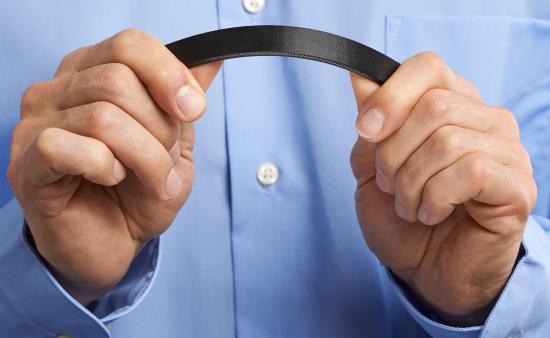
Nylon 12 is the workhorse of the manufacturing world, supporting distortion without breaking and demonstrating a high elongation at break. Its ultimate tensile strength in XZ part orientation (the strongest orientation) is 6,650 psi (46 MPa), while elongation at break is 30 percent. Users can load Nylon 12 filament onto a Stratasys Fortus 380mc CF, 450mc or 900mc system.
As evidenced by the toothbrush renaissance, Nylon 6 has been a popular thermoplastic for more than 80 years. Combining very high strength with toughness, Nylon 6 is great for snap-fit parts (middle range of flexing/stiffness) and for impact resistance; it is commonly used for things that need to be assembled, offering a clean surface finish for part mating.
Nylon 6 displays an XZ ultimate tensile strength of 9,800 psi (67.6 MPa) and elongation at break of 38%; it is available on the F900 printer. PADT customer MTD Southwest has recently used Nylon 6 to prototype durable containers with highly curved geometries, for testing with gasoline/ethanol blends that would destroy most other plastics.
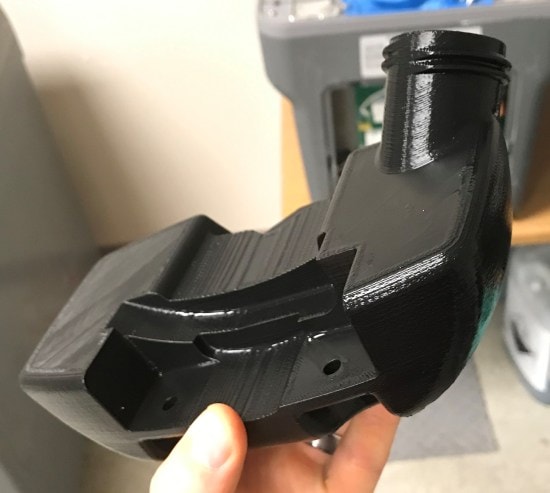
Both Nylon 12 and Nylon 6 come as black filament that prints in tandem with a soluble brown support material called SR-110. Soluble supports make a huge difference in allowing parts with internal structures and complicated overhangs to be easily 3D printed and post-processed.
Getting Stronger and Smoother
As with these first two PA versions, Nylon 12CF prints as a black filament and uses SR-110 soluble material for support; unlike those PAs, Nylon 12CF is loaded at 35 percent by weight with chopped carbon fibers averaging 150 microns in length. This fiber/resin combination produces a material with the highest flexural strength of all the FDM Nylons, as well as the highest stiffness-to-weight ratio.
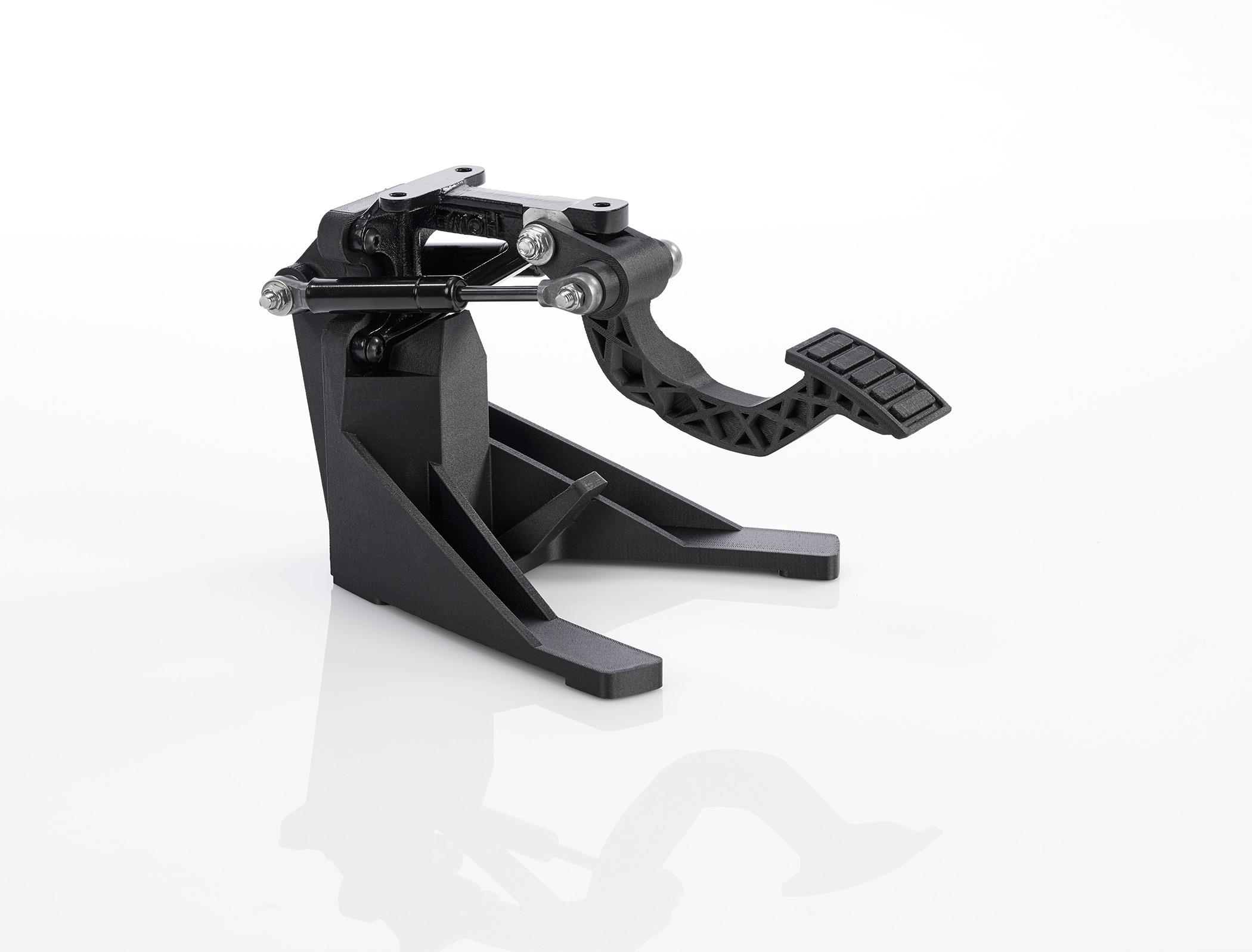
That strength shows up in Nylon 12 CF as a high ultimate XZ tensile strength of 10,960 psi (75.6 MPa), however, similar to other fiber-reinforced materials, the elongation at break is lower than for its unfilled counterpart (1.9 percent). Since the material doesn’t yield, just snaps, the compressive strength is given as the ultimate value, at 9,670 psi (67 MPa).
Nylon 12 CF’s strength and stiffness make it a great choice for lightweight fixtures. It also offers electrostatic discharge (ESD) protection properties better than that of Stratasys’ ABS ESD7, yet is still not quite conductive, if that is important for the part’s end-use. (For more details on printing with Nylon 12 CF, see Seven Tips for 3D Printing with Nylon 12 CF.) The material runs on the Fortus 380mc CF, 450mc or 900mc systems.
Just announced this month, Stratasys’ Diran filament (officially Diran 410MF07) is another black Nylon-based material; it, too, features an infill but not of fibers – instead there is a mineral component listed at seven percent by weight. This filler produces a material whose smooth, lubricious surface offers low sliding resistance (new vocabulary word: lubricious, meaning slippery, with reduced friction; think “lube job” or lubricant).
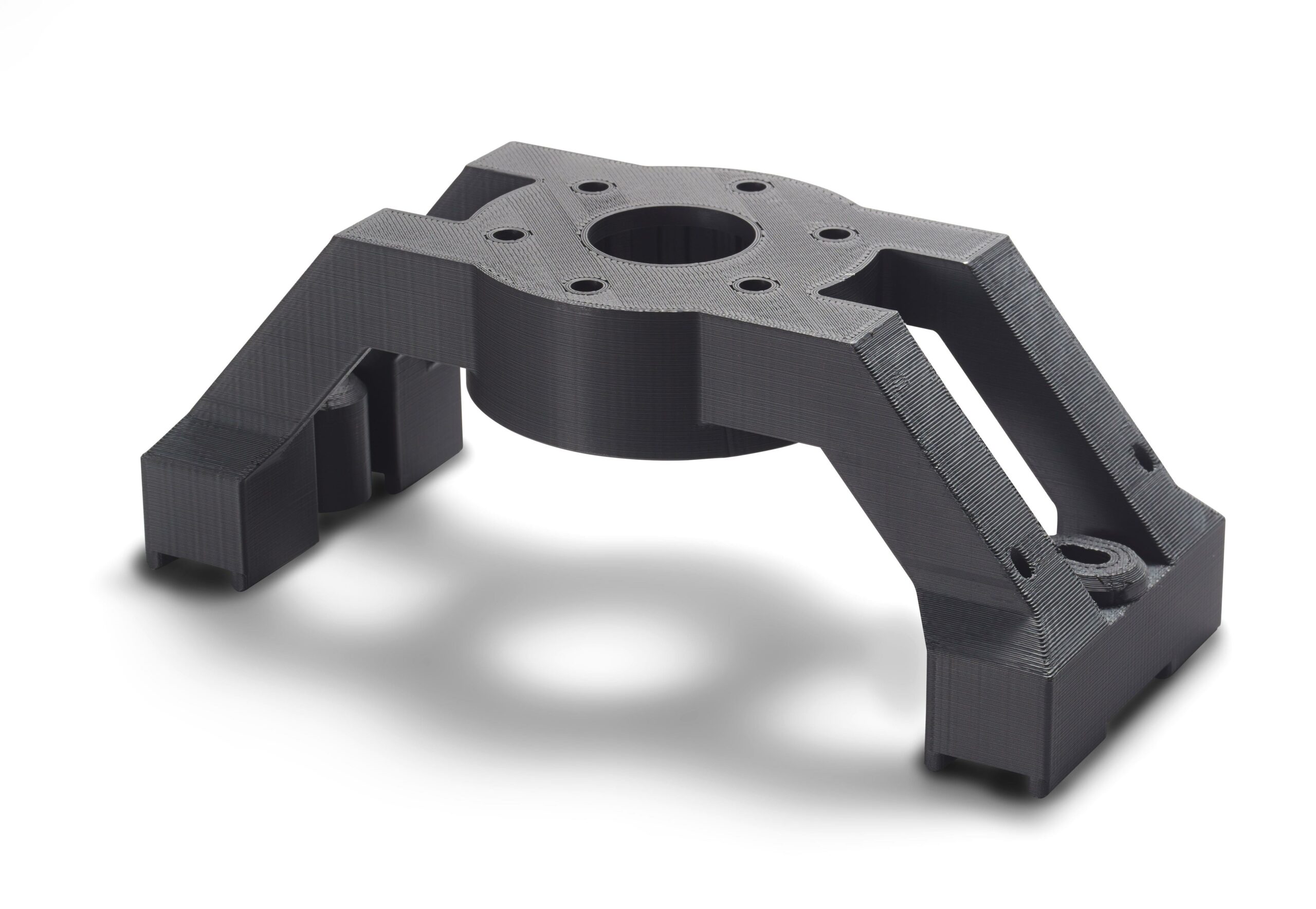
This smooth surface makes Diran parts perfect for applications needing a non-marring interface between a tool and a workpiece; for example, a jig or fixture that requires a part to be slid into place rather than just set down. It resists hydrocarbon-based chemicals, displays an ultimate tensile strength of 5,860 psi (40 MPa), and has a 12 percent elongation at break.
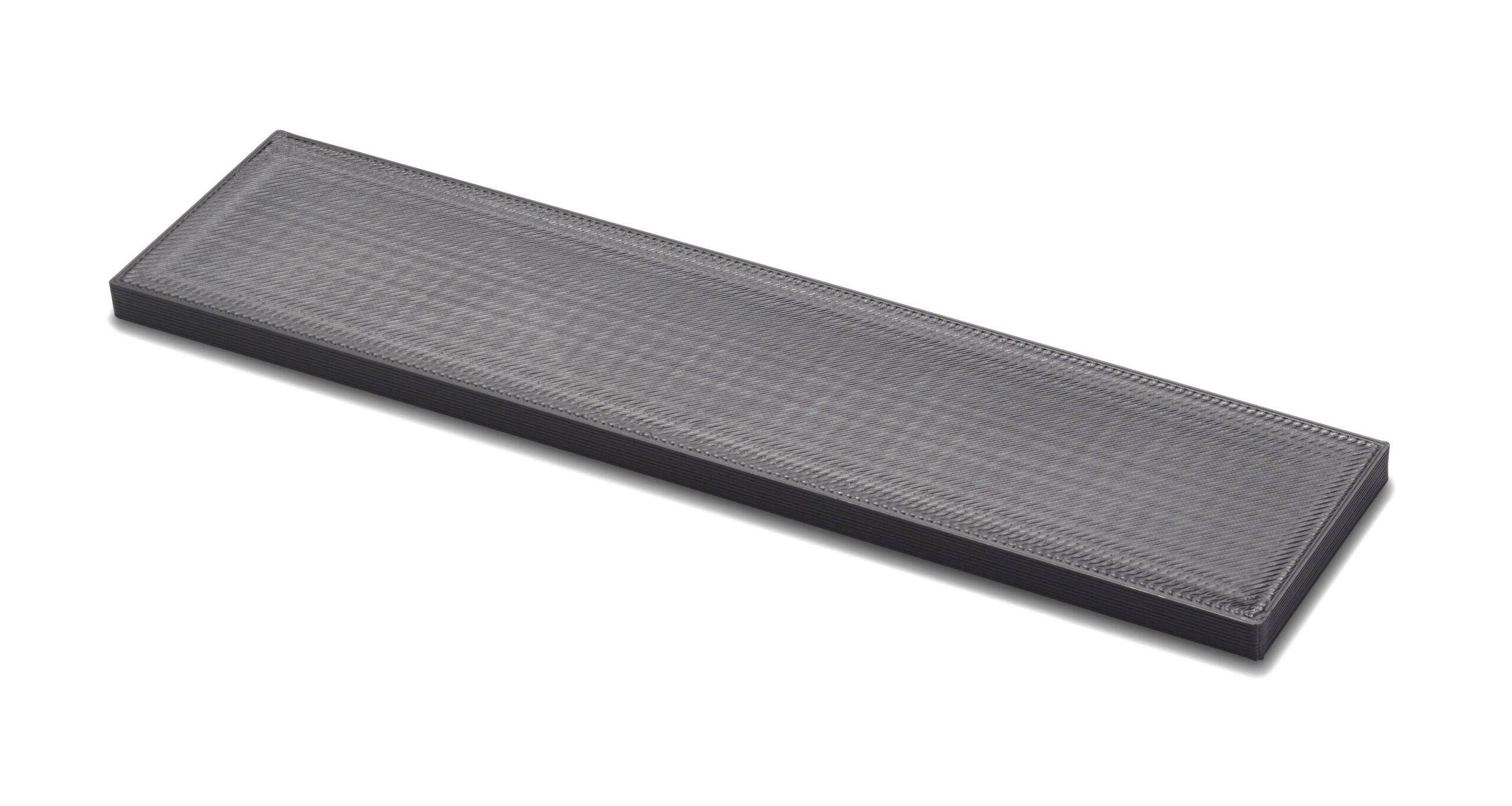
(Revised) For the first time, Diran also brings the benefits of Nylon to users of the Stratasys office-environment, plug-and-play F370 printer. The system works with the new material using the same extruder heads as for ABS, ASA and PC-ABS, with just a few material-specific requirements.
To keep thermal expansion consistent across a model and any necessary supports, parts set up for Diran automatically use model material as support. A new, breakaway SUP4000B material comes into play as an interface layer, simplifying support removal. The higher operating temperature also requires a different build tray, but the material’s lubricious properties (just had to use that word again) make for easy part removal and allow that tray to be reused dozens of times.
Read more about this intriguing material on the Diran datasheet:
and contact PADT to request a sample part of Diran or any of these useful Nylon materials.
PADT Inc. is a globally recognized provider of Numerical Simulation, Product Development and 3D Printing products and services. For more information on Stratasys printers and materials, contact us at info@padtinc.com.


















